
Asking Successful Swing Change Questions – Where to Go?
You’ve probably figured out by now that I’m not someone who promotes “quick fixes.” Instead, I focus on the deeper foundations of swing change efforts. In all honesty, there’s no other way to make lasting progress. By asking the right questions and understanding the true nature of the changes you want to make, you can set yourself up for a much higher chance of success.
This is the third article in a three-part series on major swing changes. If you haven’t already, please make sure to read the other articles before diving into this one:
- Article 1 – Must Haves & Pitfalls for Major Swing Change
- Article 2 – Understanding Your Golf Swing DNA – Where you are Now
And, as the title states – this article is primarily about where you want to go and a little bit how to get there.
Four Swing Change Questions for basically ALL solutions
How do you create starting speed in the golf swing? How do you accelerate that speed and also – how do you create som kind of control over the clubface. Finally, it’s more than benificial to ask the last questions – what’s the driver behind the motion?
I’ve basically identified three differnt “main ways” of accomplishing a golf swing. It could be broken down to infinity but let’s keep it simple instead of over complicating.
- The Big Swing Arc Swing Old School Style = This is where you create power through outlet of centrifugal force (intentionally) in the downswing and where the follow through centripetal action accelerates the input speed. This is the motion that I teach, love and respect the most. The blade control comes from understanding your finish position and the hand’s journey is continued way past the golf ball. The driver? The club, hands and arms. Think Nicklaus, early Tiger, Watson, Weiskopf, Snead, Bobby Jones, Ernie Els, Couples, Stewart, Schauffle and why not Scottie Scheffler.
- Sling the Golf Swing = you deliberately delay your arms to create a sling in a baseball style golf swing. This keeps the blade in order through delaying the wrist release so that the blade is squared with body rotation. This exists with e.g. Milo Lines or George Gankas. This would be more a “the body drives the motion” style of solution. Think Dustin Johnson and Victor Hovland and you get the picture. Downside? You need to be athletic and fit (and please consult expert coaches, not me in this pattern).
- Hitting Golf Swing Old School Style = You utilize a concept of an ax or whip (or something similar) to achieve downswing mechanics that rely on lag and forearm rotation. You can continue the motion past the golf ball but the real action is actually before the ball. Here, again, the club would be the driver of the motion and more the downswing than anything else. The follow through is more or less an effect of the downswing intention. The acceleration comes from the breaking mechanism of the hands in relation to the club. Think Ian Woosnam and Lee Westwood and you’ve got a pretty good idea about it.
- Hitting Golf Swing Modern Style = In an attempt to control ball flight and blade rotation you use the same fundamentals as above (Hitting Old School) but you manipulate forward towards the target to trap the ball. This enforces body lean / side bend. The only downswide of it is that you need to think mechanically in the impact area (which has proven difficult for 8/10 golfers in my experience). So the driver is actually split between the club and the body. Make it work and it’s golden. Think Mac O’Grady later protocols or why not Tommy Fleetwood and you’ve got an idea.
Additionally, there are many other techniques that are less commonly defined but still contribute to the overall motion. These include more unified body movements or using the shoulders in a certain way to generate power. However, these methods are not as widely represented on the professional tour, and I’ve excluded long-driving-specific protocols, as they focus primarily on power rather than consistency.
Each of these techniques has its own strengths and weaknesses, and the key to success lies in identifying which method—or combination of methods—best fits your physical and mental makeup as a golfer.
Your Swing DNA is the ruler – You are in charge
Even though I’m a huge fan of golf systems, your own idiosyncrasies will naturally add a personal tweak to any system. You always need to prioritize your own unique needs.
For example, one of my first swing changes involved learning a lag-and-whip style that required difficult movements during the transition. My own swing DNA forced me to view the swing as a three-part motion, fundamentally changing my relationship to the golf swing. Had I simply followed the instructions, I never would have succeeded. Now, looking back, I realize that this system didn’t align with my swing DNA, but because I placed myself at the top of the hierarchy, I was able to truly own and execute it (even though it was much harder than what I perform today…).
Finding YOUR Solution – The Overview
You need to align where you want to go with what you can do. In other words, match your Swing DNA to your intended solution.
The table below is an attempt to categorize different swing styles in a table and fit it with your Inner Image and Individuality. Not easy but atleast an attempt.
| Inner Image | Individuality | ||||
| Utilizing the complete swing arc? | Using a wide or narrow downswing arc? | Quick or Tranquil? | Thinking Style in Swing Change Training? | Physical Demands? | |
| Big Swing Arc | Yes, complete arc | Wide 1 plane | Both Works but favored tranquil | Abstract | Nothing Special |
| Sling Style | Yes, complete arc | Wide 2 plane | Tranquility needed overall | Mechanical | Max Athleticism to support tilts and bends |
| Hitter Old Style | Somewhat, post impact some limitations | Pretty narrow 2 plane (Penicks magic move etc) | Quick works | Abstract | Good Arm Strength and Core to deal with centrifugal force |
| Hitter Modern | Somewhat, post impact some limitations | Pretty narrow 1 plane ish | In between, more tranquil to accomplish transition move | Mechanical | Strong Body Needed to support tilts |
I could go on and on and on about different styles here but I really think this sums it up pretty well.
I hope you enjoyed these major swing change articles. Click here for a hands on Swing Change Plan (simplified version) so you can get some structure into your efforts.
The Major Swing Change Article Series

Simplified Swing Change Plan – PDF Download
Use this entire website to fill out the blank spots in the Simplified Swing Change Plan. The plan itself is a very simple resource that you download, print and then adapt to your own…
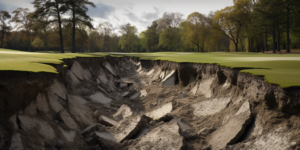
Must Haves & Pitfalls of Major Swing Change – The Big Picture
A major swing change is far from easy—but it doesn’t have to be insanely difficult either. I’m not talking about a minor tweak, like adjusting your grip slightly, but rather a complete rebuild of…

Understanding your Golf Swing DNA – Where You Are Now
Understanding who you are as a golfer—your current swing, habits, and the motivations behind them—is the foundation of any meaningful swing change. Without this self-awareness, you have no solid ground to build upon. You…
Some General Swing Tech Posts (with Videos)
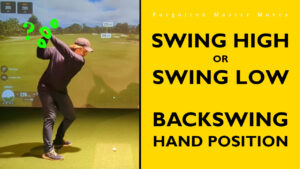
Backswing Height? Use it to your Advantage
Backswing Height? Use it to your Advantage A great backswing doesn’t guarantee a great strike — but a bad backswing definitely makes striking nearly impossible. The backswing height can be utilized to inspire more…
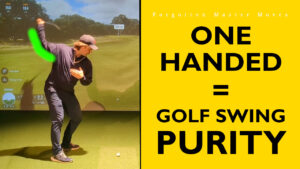
One Handed Swings = Golf’s Best Drilling?
One Handed Swings = Golf’s Best Drilling? If you practice one handed swings, I guarantee you’ll start swinging more synchronized over time. Allow me to explain. One Handed Swings Advantage 1 = No Cheating…
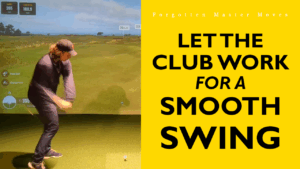
Let the Club do the Work! How to accomplish Smoothness
Let the Club do the Work! How to accomplish Smoothness I teach a motion where the golf club does the work for you. Where you don’t need to hit the gym every other day,…
The FMM Swing Articles

Most Golf Swings Are Misunderstandings — Perception Problems
What’s the difference between a good ball striker and a struggling golfer? Is it some kind of unique skill set reserved for the most athletic or talented? Heck no. It’s all about how we…

The Golf Swing Arc: The Leader Behind Your Motion
The highest level of swing technique is to be able to simplify the motion. Over the years I’ve been able to understand what matters and maybe even more importantly, what doesn’t matter, in a…
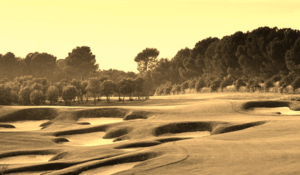
Swing Intentions – The Missing Piece for Great Golf?
Ever thought that what professionals (or the awesome players at your club) are doing isn’t quite the same as what you’re doing? Ever wondered if you can accurately draw conclusions about someone’s swing by…